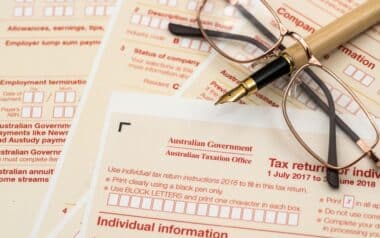Australia’s central bank has cut its benchmark interest rate to a two-year low and signaled the possibility of further reductions, a move that highlights growing concern over shifting global dynamics and the uneven pace of domestic recovery. While inflation has moderated, lingering uncertainty surrounding trade flows and commodity demand continues to complicate the economic outlook.
According to Reuters, policymakers cited mounting external pressures as a key factor behind the decision. The rate cut underscores the central bank’s intent to stay flexible amid a volatile environment, keeping options open as it navigates the intersection of international risks and subdued household spending.
RBA Weighs Deeper Cuts Amid Changing Risk Landscape
The Reserve Bank of Australia (RBA) reduced its cash rate by 25 basis points to 3.85%, following its latest two-day policy meeting. During deliberations, the board evaluated three scenarios: keeping rates unchanged, cutting by 25 bps, and even implementing a deeper 50 bps cut.
Ultimately, it opted for the more cautious step, citing increased external risk and greater room for policy maneuvering.
Governor Michele Bullock explained the shift in tone since February, when she had expressed confidence in the inflation trajectory:
Does it mean we’re headed into a long series of interest rate cuts? I don’t know at this point and that’s why I think the cautious 25-basis-point cut with a recognition that if we need to move quickly, we can. We have got space.
This policy shift marks a distinct move away from her earlier hawkish stance, as the board now focuses on flexibility in a highly unpredictable global environment.
Rising Global Trade Tensions Drive Caution
The global outlook has been significantly altered by U.S. President Donald Trump’s sweeping 10% tariff on global imports, introduced on April 2. The policy sparked immediate market volatility and added to fears of a global recession. A temporary 90-day truce between the U.S. and China did little to ease concerns.
For resource-reliant economies like Australia, the stakes are high. China remains a primary destination for iron ore exports, and any slowdown in Chinese industrial demand could severely impact Australia’s trade position. The RBA acknowledged in its Quarterly Statement on Monetary Policy that the disinflationary effects of these tensions could be felt domestically.
As Dwyfor Evans, head of APAC Macro Strategy at State Street Markets, noted:
Some talk of a ‘hawkish cut’ before the decision, but global uncertainty aside, this was a clearer directional message from the RBA than we have seen for some time.
Domestic Inflation Returns to Target Band
The RBA’s decision was also shaped by encouraging inflation data. Headline CPI remained at 2.4% in the first quarter, while core inflation, measured via the trimmed mean, fell to 2.9%—the first time it returned to the 2–3% target band since late 2021.
Governor Bullock highlighted this rare balance between price control and labor resilience:
We have managed to get inflation down at the same time as keeping the employment market on a relatively good footing, so I think so far so good.
Meanwhile, the unemployment rate held steady at 4.1%, where it has hovered for over a year, reinforcing the RBA’s confidence in Australia’s labor fundamentals.









